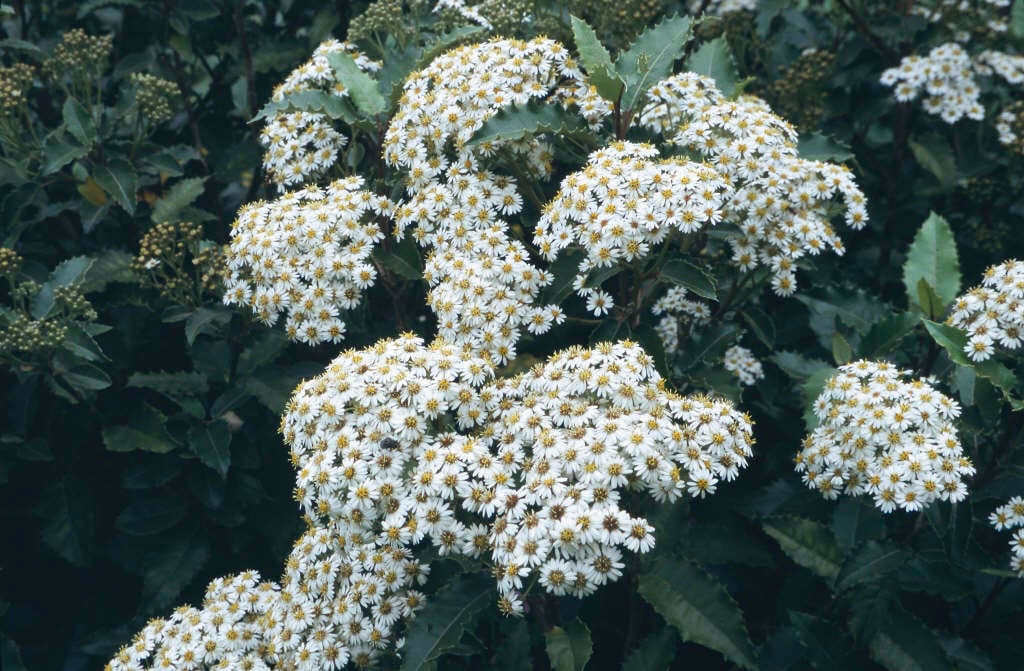Olearia macrodonta

New Zealand holly
A vigorous, evergreen upright shrub or small tree to 6m in height, with spiny-toothed, ovate, grey-green leaves, white-felted beneath, up to 9cm in length. Small, fragrant white flowers are borne in large clusters in summer
Size
Ultimate height
2.5–4 metresTime to ultimate height
10–20 yearsUltimate spread
2.5–4 metresGrowing conditions
Moisture
Well–drainedpH
Acid, Alkaline, NeutralColour & scent
| Stem | Flower | Foliage | Fruit | |
| Spring | Green Grey Silver White | |||
|---|---|---|---|---|
| Summer | White | Green Grey Silver White | ||
| Autumn | Green Grey Silver White | |||
| Winter | Green Grey Silver White |
Position
- Full sun
Aspect
South–facing or North–facing or West–facing or East–facing
Exposure
Exposed or ShelteredDrought resistance
Yes Hardiness
H4Botanical details
- Family
- Asteraceae
- Native to GB / Ireland
- No
- Foliage
- Evergreen
- Habit
- Bushy
- Genus
Olearia can be evergreen shrubs, small trees or herbaceous perennials, with simple, leathery, toothed or entire leaves and corymbs of daisy-like flower-heads
- Name status
Correct
- Plant range
- New Zealand
How to grow
Cultivation
Grow in well-drained soil in full sun
Propagation
Propagate by semi-hardwood cuttings
Suggested planting locations and garden types
- Coastal
- Architectural
- Cottage and informal garden
- Mediterranean climate plants
- Wildlife gardens
- Low Maintenance
- Hedging and screens
- Wall side borders
Pruning
Pests
Generally pest-free
Diseases
Generally disease-free but may be susceptible to honey fungus (rarely)
Get involved
The Royal Horticultural Society is the UK’s leading gardening charity. We aim to enrich everyone’s life through plants, and make the UK a greener and more beautiful place.
